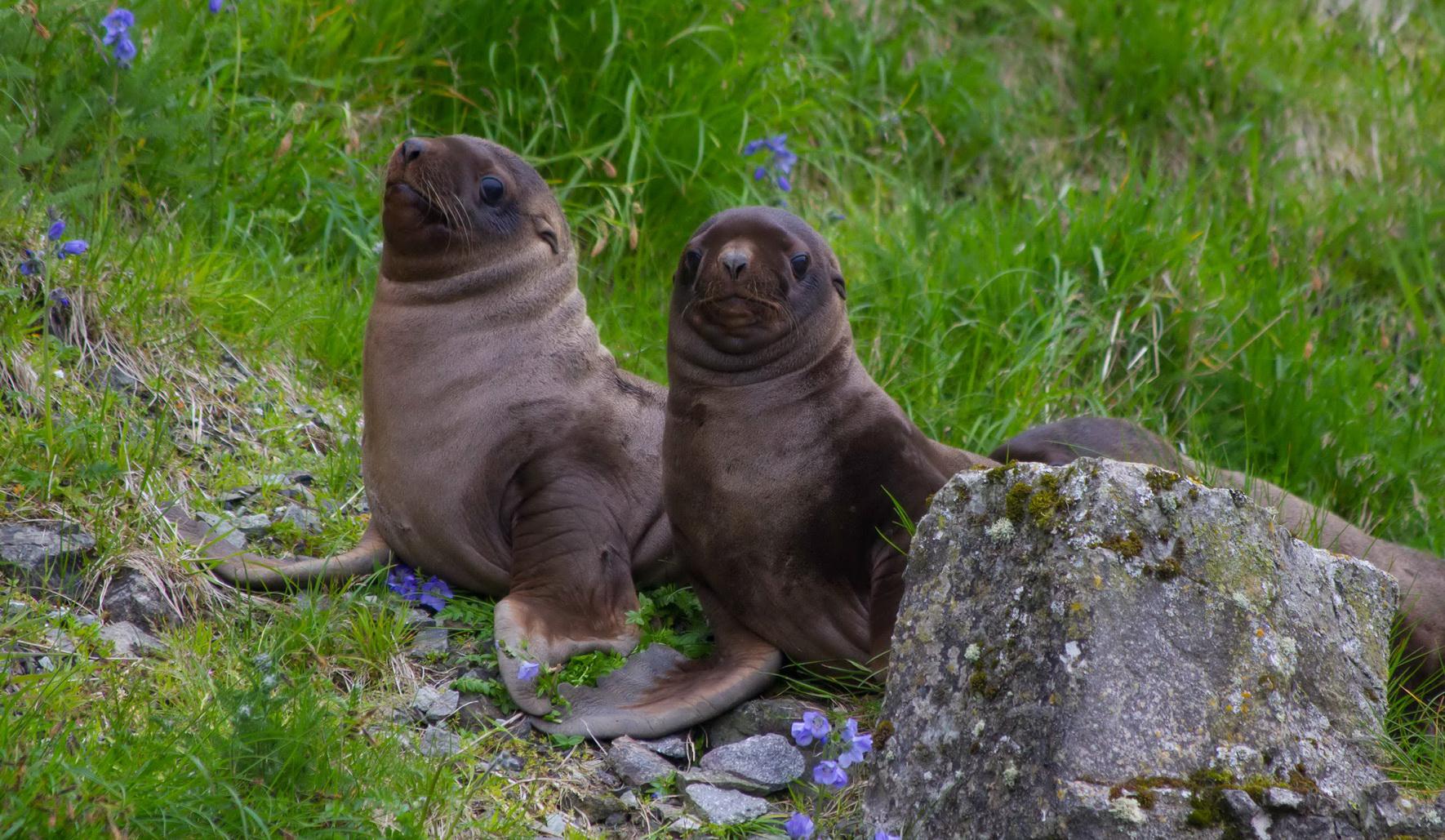
Scientists have finished another research season without solving the 40-year-old mystery of the Steller sea lion decline in the Aleutian Islands.
But this summer, a team from the National Oceanic and Atmospheric Administration may have found a new clue.
NOAA biologist Katie Sweeney is trying to solve the mystery of two sea lion stocks.
In the 1970s, the number of Aleutian Stellers crashed. 15 years ago, those on the eastern side of the Chain started recovering, albeit slowly. But those on the western side did not.
“We have field logs from biologists from the ’70s,” Sweeney said. “They talk about there being 13,000 sea lions on Attu at Cape Wrangell. We were just out there, and there were maybe 150.”
Why are western Stellers still declining? In its annual search for answers, NOAA sent Sweeney and her team to remote rookeries armed with a $25,000 drone.
After capturing half a million images, the reason behind the decline is still unclear.
Sweeney said the drone data is some of the best NOAA has collected and it’s helping them to rule out some causes and come up with new theories for the population decrease. Her team uses the pictures to track individual sea lions over decades, monitoring patterns of death and survival.
The data doesn’t indicate that more western sea lions are dying from disease, toxins, starvation or predation by orca whales. But they do illustrate something else: Birth rates are declining for western Stellers.
“Adult females aren’t having pups as often as they can,” Sweeney said. “They’re capable of having one pup per year, but we’re seeing them have one pup every other year, maybe.”
Sweeney isn’t sure why. She said every bit of information is helpful, since the stakes are so high.
Western Stellers could go extinct in the next 50 years, and their decline is a warning for other fish and mammals that live in Aleutian waters.
“If you start seeing a problem with Steller sea lions, that’s an indication that something’s not entirely right with the ecosystem,” Sweeney said. “It’s kind of a canary in the coal mine.”
Sweeney will be back next summer to look for more clues that might explain low pup production.




